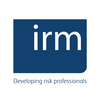In an interconnected world where businesses operate across borders, the landscape of enterprise risk management (ERM) has evolved into a dynamic and multifaceted terrain. The globalization of markets, technological advancements, and geopolitical shifts have heightened the complexity of risks that organizations face. In this exploration, we delve into the diverse dimensions of enterprise risk management, transcending borders to understand the global strategies and challenges that define this critical discipline.
Globalization and Enterprise Risk Management
1. Interconnected Markets:
- The rise of global markets has expanded business opportunities but has also introduced new dimensions of risk. Organizations must navigate currency fluctuations, geopolitical tensions, and regulatory variations as they operate in diverse economic landscapes.
2. Supply Chain Complexity:
- Global supply chains, while enhancing efficiency, have introduced vulnerabilities. Events in one part of the world can ripple across the supply chain, impacting production and distribution. Effective risk management in this context involves identifying and mitigating potential disruptions.
3. Cultural and Regulatory Diversity:
- Operating in different countries means engaging with diverse cultures and regulatory frameworks. Understanding and navigating these cultural and regulatory variations is integral to effective enterprise risk management on a global scale.
Challenges in the Global ERM Landscape
1. Geopolitical Uncertainties:
- Geopolitical events, such as trade disputes, political instability, and global conflicts, introduce uncertainties that organizations must anticipate and manage. The impact of geopolitical risks transcends borders, affecting industries and markets globally.
2. Cybersecurity Threats:
- As businesses become more digitally connected, the threat landscape for cybersecurity expands globally. Organizations need to adopt robust cybersecurity measures to protect sensitive information and maintain the trust of stakeholders.
3. Compliance and Regulatory Risks:
- Navigating diverse regulatory environments presents a significant challenge. Organizations must stay abreast of changes in regulations across multiple jurisdictions to ensure compliance, avoid penalties, and maintain operational continuity.
Strategies for Global Enterprise Risk Management
1. Integrated Risk Culture:
- Fostering a risk-aware culture that is integrated into the organizational DNA is crucial. This involves educating employees across the globe about the importance of risk management and their role in identifying and addressing risks.
2. Global Risk Governance:
- Establishing a robust governance structure that oversees risk management activities at a global level is essential. This ensures consistency in risk management practices while allowing for flexibility to address region-specific challenges.
3. Technology Adoption:
- Leveraging advanced technologies, such as artificial intelligence and data analytics, enhances the capabilities of global enteprise risk management. Predictive analytics can help in anticipating risks, and digital tools facilitate real-time monitoring of risk indicators.
Success Stories in Global ERM
1. Proactive Crisis Management:
- A multinational corporation with a proactive global ERM strategy successfully navigates a geopolitical crisis. The organization had identified political instability as a significant risk, leading to the development of crisis management plans that allowed for swift and effective response, minimizing the impact on operations.
2. Resilient Supply Chain Management:
- A global manufacturing company embraces a resilient supply chain strategy. By diversifying suppliers and employing advanced risk modeling, the organization mitigates the impact of disruptions caused by natural disasters and geopolitical events.
3. Cross-Cultural Collaboration:
- A technology firm with operations in diverse regions fosters cross-cultural collaboration in risk management. By establishing global teams with representatives from different regions, the organization ensures that risk considerations are culturally sensitive and aligned with local nuances.
The Future of Global Enterprise Risk Management
The future of global ERM lies in adaptability and innovation. As the business landscape continues to evolve, organizations must embrace a proactive and forward-looking approach to risk management. The integration of technological advancements, a commitment to a global risk-aware culture, and a strategic governance structure will be pivotal in navigating the complexities of global enterprise risk.
In conclusion, exploring the global landscape of enterprise risk management reveals a tapestry of challenges and opportunities. Organizations that embrace the complexities of operating across borders and invest in robust ERM practices are not only better prepared to withstand uncertainties but are also poised for sustained success in an interconnected world. Beyond borders, the journey of enterprise risk management becomes a strategic expedition, where the destination is not merely survival but flourishing in the face of global complexities.

No comments yet